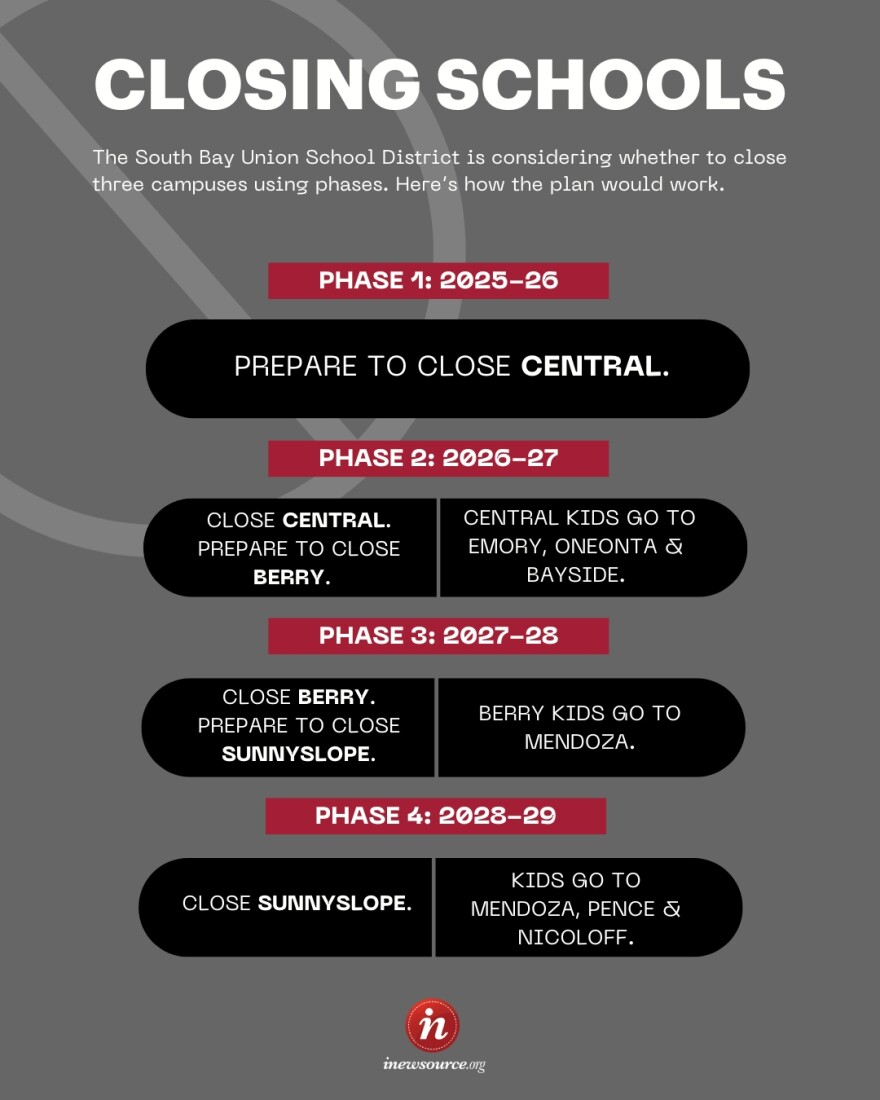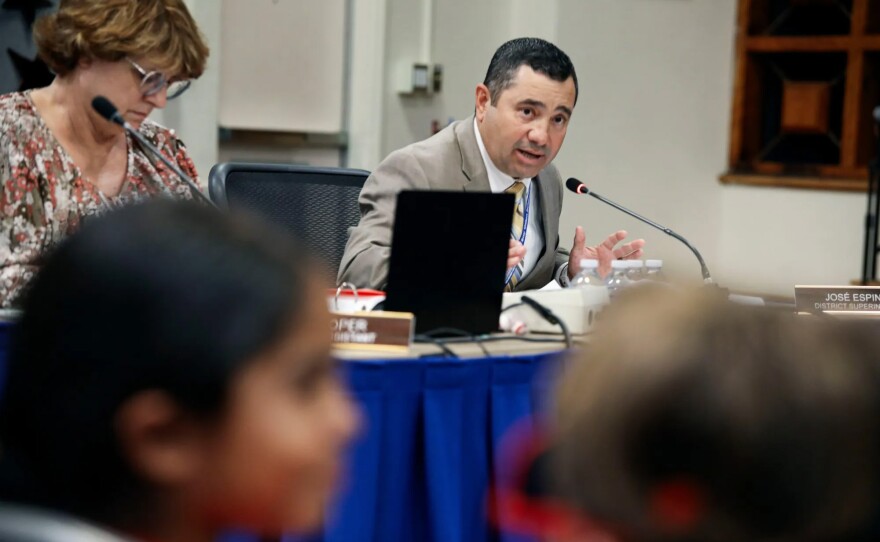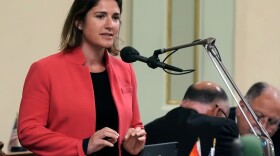South Bay Union may close three schools under the superintendent’s latest proposal to respond to the district’s ongoing loss of students and budget deficit.
Board members could vote on the plan as early as next week, with closures starting by mid-2026.
Superintendent Jose Espinoza’s latest recommendation would close Central, Berry and Sunnyslope one by one over three years. It would also postpone the launch of new specialized academic programs in the district.
The district also expects to cut staff alongside the campus closures.
Espinoza’s plan differs from input from community members — and an advisory committee that has been meeting for a year and a half to discuss consolidation options.
The committee had agreed with closing Central. But it opposed shutting down Berry and Sunnyslope, and had recommended closing Emory Elementary instead.
Some parents and teachers have also raised concerns over any impact the closures could have on students and their families, especially those who are considered low income or have special needs.
Officials project that enrollment at South Bay Union — already half of what it was a decade ago — will continue to decline, meaning less funding for the district.
Next year, South Bay Union faces a roughly $19 million shortfall and $15 million the following year. That’s even as officials expect to spend most of its reserves to balance the budget.
“This is a tough subject. But when you look at the sustainability of operating under-enrolled schools, it’s not financially sustainable,” said Michael Taylor, the district’s consultant on closure talks, during a special board meeting last week.
Some board members said at the meeting that they still had questions and were not ready to make a decision.
The district has yet to draw new school boundary lines that balance student enrollment across its campuses. Officials also must ensure the size of Nestor Language Academy, where enrollment has grown in recent years, aligns with state standards. And South Bay Union still needs to determine exactly how it will improve academic achievement.
But whether the board decides to move forward with this proposal or another, difficult choices need to be made, Espinoza said during the meeting.
“A district cannot continue — when they’ve lost that many students — doing the same thing they’ve always done,” he said. “We just can’t.”
Revised recommendation
Under Espinoza’s plan, the district would begin making preparations next school year to close Central Elementary, ultimately shutting its doors in 2026-27. During that time, the district would repeat the process of preparing for the next closure and executing the following year until all three campuses are shut down by mid-2029.
Officials say the plan will allow the district to make any necessary changes as they approach each new step.
Once Central closes, students from that campus would be distributed across Emory, Oneonta, Bayside and, potentially, Mendoza Elementary.
The following year, Berry would close and its students would transfer to Mendoza.
Then, students from Sunnyslope would be spread across Mendoza, Pence and Nicoloff elementaries.

The district would use funds, including from bonds, to create a maintenance and replacement plan for Nestor Language Academy. The site is in need of better facilities and clear guidelines to ensure it has the appropriate acreage to cater to a larger population.
Administrators considered the cost of facility upgrades, campus sizes and the distribution of schools across the entire district when determining which sites to eliminate. South Bay Union also must comply with recent state legislation, prompted by a rise of districts in financial distress, that requires it to consider specific metrics — such as operating costs, associated savings and environmental factors — to ensure students are not disproportionately impacted.
Once in the planning stage, officials will revisit school boundaries to balance enrollment across the district’s campuses. Pick-up and drop-off busing services would be available so that families are still traveling the same distance even if their current school closes, said Rigo Lara, the district’s assistant superintendent of business services.
Lara said the pause on additional specialized programs is meant to help the district focus on improving academics. Based on the community’s desire for more programs, officials proposed each campus could have a specialized focus, including a hub for environmental science, dual language and visual and performing arts. Now, those programs wouldn’t come until the 2028-29 year, when campus closures would be completed.
Just a third of South Bay Union students met or exceeded the state standards for English last year, data shows. For math, it was worse: only 20%.
Opposition
Members of the superintendent’s advisory committee, which include staff and community members, have said they oppose closing Berry and Sunnyslope. Some teachers also argue that the smaller class sizes could actually help address learning gaps among students.
“We must commit to keeping every single one of our neighborhood schools open,” said Vanessa Barrera, president of the Southwest Teachers Association, during the meeting last week.
A district with under-enrolled schools may be able to get by, but it’s not sustainable, said Taylor, the district’s consultant. The financial strain wouldn’t allow a district to raise salaries and offer new programs, he said.
Ezpinoza said staffing makes up roughly 90% of the district’s general fund. To help lessen the impact on staff, officials may move employees who lose their jobs in the campus closures to vacant positions or roles that will soon open due to retirements.
Each school closure would save the district between $400,000 to $900,000, with most of the savings coming from reductions in management and classified staff, Taylor said.
The board meets again May 28.







